Everything to know about lube: What it is and when you should use it
Slide into your personal playground
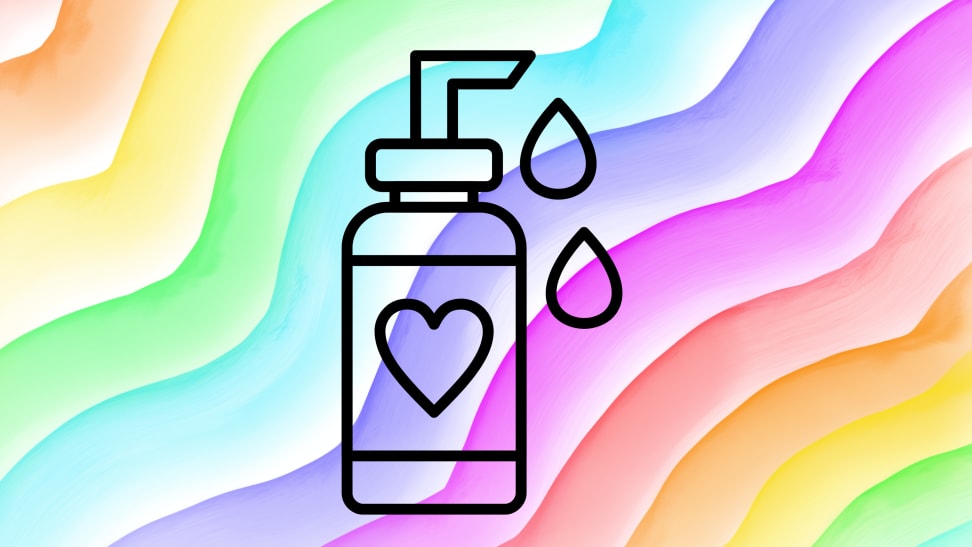 Credit:
Reviewed
Credit:
Reviewed
Products are chosen independently by our editors. Purchases made through our links may earn us a commission.
Lube isn’t just a way to handle dryness—it’s a way to turn good sex into great sex. It cuts down on unwanted friction, supports safer sex, and helps prevent irritation and microtears. It’s also a gamechanger for anal sex, masturbation, and marathon fucking of any kind.
However, not all lubes are created equal. From the frictionless slip of silicone to the easy cleanup of water-based formulas, the options are endless—and some are better suited to your body, toys, and safer sex practices than others. Use the right lube, and you barely notice it. Use the wrong one, and you might not notice until it’s too late.
In this guide, we’ll take you through what lube is, how to use it, what ingredients to avoid, and how to choose the right lube for your needs. It’s time to be slippery when you want to be, not just when you’re wet.
What exactly is a personal lubricant?
Personal lubricant, a.k.a. lube, is a water-, silicone-, or oil-based liquid or gel that you can use genitally and anally during sex or masturbation. Lube for sex generally means less unwanted friction and, as a result, a better time for everyone involved.
But the right lube—one that’s made of body-safe materials, and compatible with your safer sex practices, barriers, toys, and physiology—also supports safer sex and sexual health. Lube lowers the risk of vaginal and anal microtears, particularly during extended fucking or when using toys. It reduces the chance that a condom will break, which means it supports condoms in lowering the risk of sexually transmitted infections (STIs) and pregnancy.
And the wrong lube? Can increase the risk of irritation and therefore infection. It can even melt your sex toys.
Speaking of irritation, a personal lubricant is not a spermicidal lubricant. Spermicidal lubricant is a type of lube that includes a chemical, often nonoxynol-9, to stop sperm from reaching the egg.
It’s inserted vaginally before sex, and when used alone, is only roughly 79% effective as birth control. You can use it along with condoms or other birth control methods to reduce the chances of pregnancy. However, it does nothing whatsoever to reduce the risk of STIs, including HIV.
And, especially if you have sex frequently, it might even increase that risk by leading to vaginal irritation which can make tissues more susceptible to infection.
So, how do you know which personal lubricant to try? Read on for the types of lubes, common ingredients, and allergies, when to use it, how to use it, and top picks for the best lube for sex.
Common ingredients and types of lube for sex

There are four major types of personal lubricant: water-based, silicone-based, oil-based, and hybrid.
Not all lubes are created equal. The ingredients matter—so does what you’re doing, who you’re doing it with, and whether your toys are made of silicone or something else. That’s why it helps to know the four major types: water-based, silicone-based, oil-based, and hybrid. Each one has its strengths, drawbacks, and times to shine.
Water-based lubes: Water-based lubes are the most versatile and widely available. They’re compatible with condoms, dental dams, gloves, and all toys; easy to clean up; and come in a range of textures and ingredients. You can find everything from basic drugstore options to boutique blends with aloe or hyaluronic acid. The downside? They can dry out faster than other types, especially during extended fucking or in water. But a little reapplication brings them right back to life.
Silicone-based lubes: Silicone-based lubes are slick, long-lasting, and waterproof, making them perfect for shower or marathon sex (or both). They stay on the surface of the skin rather than absorbing, creating a frictionless glide. But silicone lubes aren’t compatible with silicone sex toys, take more effort to wash off, and can stain. They’re like the leather pants of lube: smooth, sexy, and sort of annoying to wear every day.
Oil-based lubes: Oil-based lubes, whether dedicated oil-based lube formulas or natural oils like coconut, olive, or jojoba oil, can be options when external massage will turn into something more. They are compatible with polyurethane barriers. However, oil-based lubes degrade latex and polyisoprene condoms (leading to pregnancy and STI risks) and stain your sheets, and can throw off vaginal pH and trap bacteria. Jojoba oil is also toxic when consumed orally, so if you use it, plan the order of operations accordingly.
Hybrid lubes: Hybrid lubes combine water and silicone to give you the best of both. They’re smoother and longer-lasting than water-based lubes, but still toy-friendlier and easier to clean than pure silicones. (It’s always a good idea to double-check the manufacturer’s notes for the specific individual lube and toy involved.) Hybrid lubes can also vary wildly, so review the ingredients and pH if you have sensitivities.
Sensitivities and allergies
Your genitals deserve even more care than the best of your body, especially given the mucous membranes involved. Some lubes for sex are formulated with gentle, body-safe ingredients. Others? Not so much. If you’ve ever felt burning, itching, or weirdness after trying a new lube, you weren’t imagining it. Certain additives can irritate, especially if you have a history of yeast infections, UTIs, or sensitive skin. Here’s what to watch out for:
Glycerin: Glycerin, a type of sugar alcohol, is fairly common in water-based lubes, but can also trigger yeast infections in people with vaginas. Some people do not experience issues with glycerin, but if you or your partner is prone to repeat yeast infections (or not sure), avoid it.
Parabens: Parabens are preservatives linked to skin irritation, hormonal disruptions, and even cancer.
Flavors and fragrances: I will die on this hill: Genitals should taste like genitals. Flavors and fragrances can make a product scare-quotes “fun” but tend to rely on synthetic ingredients that can lead to irritation and reactions. Choose unscented and unflavored options. If genitals have a strong smell even after thorough washing, consult a medical professional to rule out any underlying issues.
Menthol and warming agents: Any sort of tingling sensation from a lube is likely due to menthol or capsaicin. While these ingredients can increase blood flow, they can also increase burning sensations or inflammation, especially if your skin is already irritated, dry, or sensitive.
Nonoxynol-9: Found in spermicidal lubricant, nonoxynol might decrease the likelihood of sperm reaching the egg, but it increases your chances of irritation and, therefore, infection.
Propylene glycol: Propylene glycol is what creates the slippery texture in some water-based lubes. But it can cause stinging, itching, or a dry, tight feeling after sex, particularly in people with vulvas.
Chlorhexidine: Chlorhexidine is a harsh disinfectant that can disrupt the vaginal microbiome by killing off good bacteria, which can increase the risk of infection.
pH balance: When a lube has water in it, you can match its pH to that of the body part you intend to use it with to reduce irritation. (Because silicone lube doesn’t contain water, it doesn’t have a pH.) For instance, pre-menopausal vaginas tend to have a lower pH, while post-menopausal vaginas, and anuses, tend to have a higher pH.
Expiration dates and storage: Like any other body care product, lube expires. Water-based lubes typically last one to three years, silicone can stretch a bit longer, and your mileage may vary with oil. Expired lube may separate, change texture, go rancid, or harbor bacteria. If it smells weird or looks cloudy, toss it. Store lube somewhere cool, dark, and dry. And if you reach for it mid-sex, make sure to close, wash, and dry the bottle afterwards.
If you have sensitive skin or a vulva that reacts to everything, look for lubes for sex labeled hypoallergenic, gynecologist-tested, or specifically designed for sensitive skin. And patch-test new products on your inner arm or wrist, massaging them in and waiting 24 hours before trying them anywhere more intimate.
Consider using a personal lubricant when …
Lube isn’t just for “fixing” dryness—it’s a way to make sex and masturbation feel better, smoother, and more connected. Think of it as making a good thing better, rather than as a last resort.
Here’s when to consider using it:
- During vaginal penetrative sex or masturbation, alone or partnered, since less friction means more pleasure.
- During anal penetration, since the (healthy) asshole is not self-lubricating.
- With sex toys, where a compatible lube cuts down on friction and increases sensation.
- When having any type of sex for a long or enthusiastic time.
- When using condoms, since extra lubrication can reduce breakage and increase sensation.
- When using dental dams or gloves, for the same reason.
- During perimenopause and menopause, or postpartum, when hormonal shifts can reduce natural wetness.
- When taking certain medications, including some antidepressants, antihistamines, or hormonal birth control, which can cause dryness.
How and where to apply lube
How do you use lube for sex? Start with a little, see how it feels, and add more if you want. The goal is to reduce friction, but also not totally eliminate it.
With a condom: While many condoms are pre-lubricated, they are usually not sufficiently so. Add a few drops of water- or silicone-based lube inside of the tip before the wearer puts it on (skip this step if you’re putting it on a strap-on), and then more on the outside once it’s on. Just make sure that the lube is compatible with your condom material first.
Without a condom: Lube can go directly on the skin, toy(s), or body part(s) involved in the friction or penetration. Apply it wherever it’s needed.
With a dental dam: Apply lube only to the side of the dental dam that’s going against the receiver’s body. Double-check that the lube and dam materials are compatible first.
You can also reapply as needed. Friction, body heat, and absorption all wear lube down over time, and refreshing it can keep things comfortable and pleasurable. Keep the bottle within reach accordingly.
Lube substitutes: Can you use Vaseline, Aquaphor, or olive or coconut oil?
If you’re out of lube, it can be tempting to grab whatever’s around and hope for the best. Resist that urge. Not all household products are good as lubes, or for you.
Vaseline and Aquaphor: Vaseline and Aquaphor are petroleum-based, which makes them risky. They degrade latex condoms, can trap bacteria and lead to irritation, and increase the chance of infection. Among people with vaginas, using petroleum as a lube can make you more than twice as likely to test positive for bacterial vaginosis. They also take a long time to wash out, particularly from inside you.
Olive oil: Olive oil has “no known harmful effects for use as [a] lubricant,” according to one study. If you opt to try it, choose an olive oil with no additives or flavorings and remember that oil is not compatible with latex condoms.
Coconut oil: Coconut oil has some natural antimicrobial properties but can still disrupt vaginal pH. Also, it often comes in wide-mouth containers—which means that if you grab an open jar from your pantry in a sex emergency, you risk cross-contamination between your kitchen and bedroom.
Our picks: Best lubes for sex

Sutil Luxe is a water-based lube that feels light, smells neutral, and is never sticky. It’s compatible with condoms, gloves, toys, and all body parts — though its pH of 4.5 means it’s perfect for pre-menopausal vaginal use. (For post-menopausal vaginal or anal sex, check out Sutil Rich.)
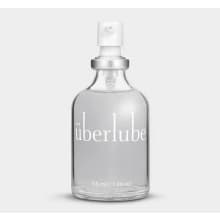
Überlube is a light, smooth silicone lube that comes in a minimal glass bottle. It doesn’t get tacky when it dries. It also has only four ingredients: dimethicone, dimethiconol, cyclomethicone, and vitamin E. Note that Überlube is compatible with latex and polyisoprene condoms, but isn’t compatible with polyurethane condoms or silicone toys.
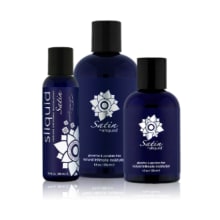
Sliquid Satin is a light, water-based lube that contains plant cellulose and aloe vera. Though it’s less slippery than silicone lubes, and might require reapplication, it’s also easier to clean up and way less likely to stain. Sliquid Satin is compatible with all types of safer sex barrier and sex toy. It has a pH of 4.1 to 4.4.
… and best lubes for anal sex
The asshole does not self-lubricate (and if yours does, talk to your doctor, because it should not be doing that). This means lube for anal sex is a must. While lubes are largely interchangeable by body part, there are some slight differences: A good anal lube is thicker, so it lasts longer and acts like a cushion between the asshole and whatever is going into it. The anus also has a higher pH than the vagina, so with water-based lubes, choosing one with a higher pH can reduce the likelihood of irritation.
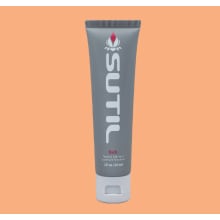
Sutil Rich is a thick water-based lube that’s long-lasting, non-irritating, and never sticky. It has a pH of 6, which means it’s perfect for anal or for sex after menopause, when vaginal pH tends to become more alkaline. Plus, it’s water-based, so it will work with any barrier or toy.
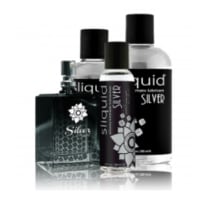
Sliquid Silver is a thick silicone lube that’s long-lasting even in the shower (because, as a silicone lube, it’s waterproof). It’s also hypoallergenic and contains only three ingredients: cyclopentasiloxane, dimethicone, and dimethiconol.
Our Experts
Ryan Yates has over 20 years of experience as a writer and editor.
They have been reviewing sex toys and sexual health products since 2011, among other writing and editing. Their bylines include The Daily Beast, Nylon, Electric Literature, Refinery29, and, of course, Reviewed. Yates was Autostraddle’s NSFW Editor from 2013 to 2018, and wrote the notorious NSFW Sunday column from 2011 to 2021.


